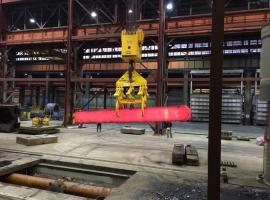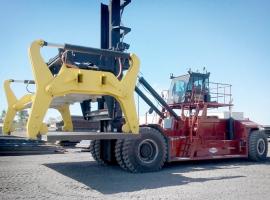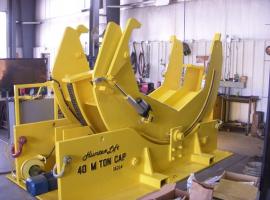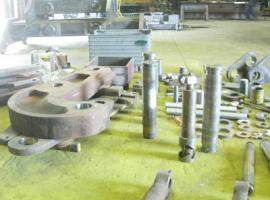Like most material handling equipment used in manufacturing, BTH lift attachments need regular inspection and maintenance to ensure they are safe to use. Manufacturers provide maintenance instructions and the OSHA regulations that need to be followed if applicable.
Basic routine maintenance can be as simple as lubricating and making equipment adjustments to ensure the equipment is meeting the specified standards. These steps improve the overall functionality of the moving parts. At the same time, compliance inspections are needed to ensure equipment performance standards are met. As the equipment owner or operator, it is important to understand these details. Regular inspections should be performed so the equipment is always current with these standards.
At Hunter Lift, depending on the use of the lifting device, we’ll classify each as Severe Service, Heavy Service and Normal Service. In addition, we provide non-destructive testing on welds and ultrasonic testing on high stressed components in addition to general operational and visual testing and observations. The inspections are performed by engineers and a Level II technician from Hunter Lift. Generally one of our 3 to 4 member teams can inspect approximately 100 to 300 devices per day.
Specific processes for lift equipment inspection vary depending on the type of lift. Before the equipment is tested and inspected, a pre-check should be performed. The pre-check begins before looking at the equipment. The inspector should request specific information and have conversations with the operators relative to the frequency of equipment usage to make determinations that could affect the safety of the lift equipment. This pre-check should include the following paperwork:
- Use of Equipment:Evaluating equipment use is helpful to make sure the right lift is being used for the work that needs to be completed.
- Inspection and Maintenance Records:Check the inspection and maintenance records to ensure that everything is up-to-date for the lift that will be used. This logbook should be kept current at all times and include maintenance, repairs, and other details specific to the equipment.
- Check the Maintenance Requirements:In addition to current records, it is also important to look at maintenance recommendations and requirements to ensure the schedule is followed.
- Qualifications of the Operator:Not only does the equipment need to be in good condition, but the operator must be trained on all aspects of the lift in use, including the functional limitations of the equipment.
Frequent Inspection Guidelines:
Even if the lift isn’t operated regularly, routine testing and inspection are important to ensure the lift equipment is ready to be used when needed. Depending on the use of the equipment, it is smart to complete frequent inspections. The frequency of these inspections is based on the level of service, activity, and the environment where the equipment is operated.
The best way to identify wear and tear in the early stages (and thus minimize the risk of injury or damage) is to maintain a consistent schedule for inspections. BTH lifts can cause serious injury when something goes wrong. Overlooking these inspection schedules could result in liability if something happens on the work site.
Conclusion:
BTH lift inspections should be a top priority for maintenance professionals to ensure their equipment is functioning properly. In addition, routine maintenance can be as simple as lubricating and adjusting to ensure the equipment is meeting the specified standards provided by the manufacturer. Hunter Lift, Ltd. is the leader in custom designed and manufactured “Below the Hook” lifting devices and mobile crane attachments. To speak with a Hunter Lift Technical Engineer, call 800-231-6501 for a no cost consultation.
And thank you for reading our blog.
Search
categories
- Select...
- Safety (13)
- Lifting Equipment (12)
- Company (6)
- Materials (5)
- Education (4)
- Services (3)
- Industries (3)
- News (3)
- Cranes (2)
- History (1)
Recent Posts
Comprehensive Guide to Below the Hook Lifting Devices The 6 Advantages of Below The Hook Lifting Devices The Keys to Safety and Design Requirements of Below-the-Hook Lifting Devices Why Below the Hook Lifting Devices Are Essential to Lifting? Requirements for Below the Hook Lifting Devicesarchives
- April 2023 (1)
- January 2023 (1)
- October 2022 (1)
- September 2022 (1)
- August 2022 (3)
- July 2022 (3)
- July 2017 (1)
- June 2017 (1)
- May 2017 (1)
- April 2017 (1)
- January 2017 (1)
- December 2016 (1)





